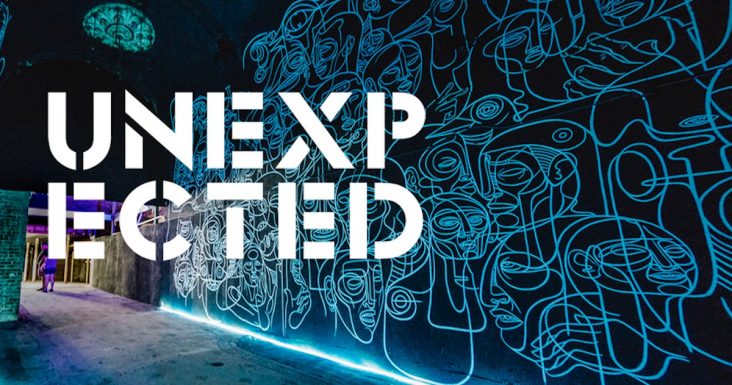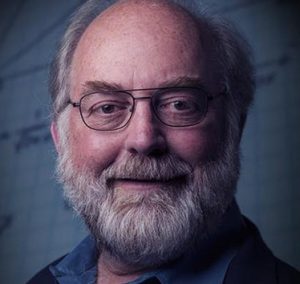Futurist Frey to bring his predictions, insights to Fort Smith
by October 10, 2018 6:48 pm 1,241 views

Thomas Frey is coming to Fort Smith and he’s bringing the future with him. That future, he says, is coming fast, with humanity to “change more in the next 20 years than in all of human history.”
Frey, executive director of the Westminster, Colo.-based DaVinci Institute and a noted futurist lecturer who spent 15 years as an IBM engineer, is part of the Outlier Series with the 2018 Unexpected festival. His 60-minute lecture will be held at 1 p.m., Oct. 27, in the ground floor of the Propak building at 1100 Garrison Ave. Link here for tickets to the event.
Steve Clark, founder of Propak and The Unexpected, said Frey was added to the event because it’s important for a city and region to know what’s around the corner.
“The pursuit of perspective and the challenge to ourselves is to consider the future and our (Fort Smith’s) role in it,” Clark told Talk Business & Politics. “The principal motivation in inviting Thomas Frey to our city is to be purposeful and deliberate about how we position ourselves for forward looking success; we do not have the luxury of only considering the here and now. Thomas will inspire us to consider these things.”
THE BIG EIGHT
Frey, author of the 2017 book “Epiphany Z: 8 Radical Visions for Transforming Your Future,” believes there are eight broad categories that will result in the next two decades delivering transformative change to every aspect of human life. Following are the eight.
• Trillion sensor movement
Frey believes that by 2022 there will be more than a trillion sensors in devices from phones to refrigerators with millions of different uses and capabilities.
• Internet of things
All of those sensors will help connect cars, appliances, buildings and almost any physical item one can think of. Frey said in the very near future a majority of internet traffic will be from device-to-device communication.

• Cryptocurrency-Blockchain
Advances in this technology will be disruptive to the banking and financial sectors and will challenge the traditional notions of payment, accounting and other financial transactions.
• Drones
Frey said around 2032 there will be one billion active drones. He said drone advancements will challenge governments who have an obligation to protect people and not stand in the way of progress. For example, the drone that can deliver retail packages can also deliver bombs. But overregulation might prevent broad use of an ambulance drone that can land near an accident and fly people to hospitals, In the not to distant future, Frey believes, thousands of drones will fly over large cities on a daily basis.
“It’s still a hobbyist’s world out there right now, but in very short order we’ll begin to see fleets of drones,” he said.
3D Printing
In addition to disrupting the manufacturing sector, 3D printing can also be used to produce prescription pills that include all the medicine a person may need.
Mixed reality devices
Virtual reality and augmented reality will transform how people interact with the world around them. One area to change will be education. Frey predicts the largest internet-based company by 2030 will be an education company. Such technology also could change the home buying process.
Artificial intelligence (AI)
Scientists have already proven that computers that teach themselves to learn become better than human doctors at predicting heart attacks. AI has also been used by NASA to discover planets. Everything from movie experiences, food preparation, fashion design, and crime prevention will be radically altered by AI, Frey predicts.
Driverless technology/automated transportation
Of the eight change categories, Frey said this sector “will be the most disruptive technology in history.” He predicts humans will quickly move to not owning a vehicle, and by simply ordering a driverless car when needed, humans will move from a just-in-case concept to a just-in-time concept.
In addition to the new jobs, consumer savings and personal and business efficiencies the driverless technologies will create, there will be serious downsides. Frey said 20% to 40% of sales tax going to cities comes from car sales. On average, 41% of U.S. airport revenue comes from parking fees. Traffic citation revenue will all but disappear. Many car dealerships, jiffy lubes, tire stores and other businesses with a direct connection to autos will go away. And Frey predicts that roughly 10% of retail tied indirectly to the auto industry will go away. He does predict a construction “boomlet” around reconfiguring residential garages.
“We can’t even imagine the impact it will have just yet,” Frey said of driverless technology.
COMMUNITY RESPONSE
Frey said smaller metro areas like Fort Smith will see the transformations at the same time as larger east and west coast regions. There was a time when trends and fashions on the coasts would take a few months to move inland. Those days are over.
“I don’t see much delay anymore. One of the things the Internet has done has increased our awareness,” Frey said, adding that ideas and innovations move “pretty simultaneously now.”
Frey said smaller metros “could have a significant advantage from a cost standpoint to start a new startup,” over larger metros. But retaining and recruiting the minds that can innovate and adapt will be key no matter the region, he said. The key to attracting talent comes down to the question, “How do you build a community they want to live in?” Frey said.
“Sometimes it only takes one or two key businesses. Maybe it’s a brew pub, or some live music venues or some coffee shops. That might be all it takes to create that revitalized culture,” he explained.
However, he cautioned against the desire for smaller regions to try to provide all the quality of life and other amenities of large regions. He said a city needs to be “unique and different,” and not just a collection of national restaurant and retail chains.
“The worst thing to do is just to try to mimic what everybody else is doing,” he said.
